
Paperboy is an arcade action game developed and published by Atari Games, and released in 1985. The player takes the role of a paperboy who delivers a fictional newspaper called The Daily Sun along a street on his bicycle. The arcade version of the game featured bike handlebars as the controller.

Operation Wolf is a light gun shooter arcade game developed by Taito and released in 1987. It was ported to many home systems.

Stunt Car Racer is a racing video game developed by Geoff Crammond. It was published in 1989 by MicroProse, under their MicroStyle and MicroPlay labels in the United Kingdom and in the United States, respectively. The game pits two racers on an elevated track on which they race in a head-to-head competition, with ramps they must correctly drive off as the main obstacle.

CRL Group plc was a British video game development and publishing company. Originally CRL stood for "Computer Rentals Limited". It was based in King's Yard, London and run by Clem Chambers.
Pete Cooke is a British computer games programmer, best known for his work published in the 1980s for the ZX Spectrum.

RoboCop 2 is a platform shooter video game based on the 1990 film of the same name. The game was released for several platforms, including Amiga, Amstrad GX4000, Atari ST, Commodore 64, Game Boy, Nintendo Entertainment System, and ZX Spectrum. Ocean Software developed and published several versions, and Data East manufactured an arcade version.

RoboCop 3 is a video game based on the 1993 film of the same name. Amiga, Atari ST and DOS versions were developed by Digital Image Design beginning in September 1990, and published by Ocean Software in December 1991. The Digital Image Design version includes multiple gameplay styles. During 1992 and 1993, other versions consisting of side-scrolling platform gameplay were released for the Commodore 64, ZX Spectrum, NES, Super NES, Game Gear, Master System, and Sega Genesis.

Nodes of Yesod is a video game developed and published by Odin Computer Graphics in 1985. The game is similar in style to Underwurlde by Ultimate Play the Game, which was released a year earlier, and Metroid which was released the following year, in 1986.

Arcticfox is a science fiction tank simulation video game developed by Dynamix and published by Electronic Arts in 1986. It was published in Europe by Ariolasoft. A sequel to Dynamix's Stellar 7, the Atari ST, Commodore 64, ZX Spectrum, MS-DOS, and Apple II. A third game was released in the series in 1991 titled Nova 9: The Return of Gir Draxon.

Super Monaco GP is a Formula One racing simulation video game released by Sega, originally as a Sega X Board arcade game in 1989, followed by ports for multiple video game consoles and home computers in the early 1990s. It is the sequel to the 1979 arcade game Monaco GP. The arcade game consists of one race, the Monaco Grand Prix, but later ports added more courses and game modes based on the 1989 Formula One World Championship.

Back to the Future Part II is a 1990 action game based on the 1989 film of the same name. It was developed and published by Image Works for Amiga, Amstrad CPC, Atari ST, Commodore 64, MS-DOS, Master System, and ZX Spectrum. The game has five levels based on scenes from the film, and was criticized as a poor conversion of the film. It was followed by Back to the Future Part III.
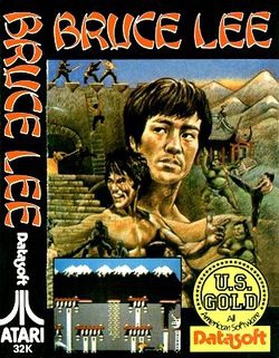
Bruce Lee is a platform game written by Ron J. Fortier for Atari 8-bit computers and published in 1984 by Datasoft. The graphics are by Kelly Day and music by John A. Fitzpatrick. The player takes the role of Bruce Lee, while a second player controls either Yamo or alternates with player one for control of Bruce Lee.
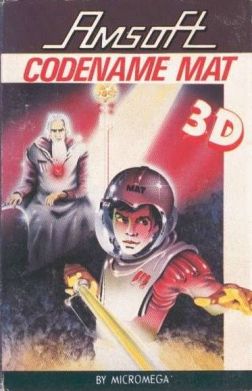
Codename MAT is a space combat simulator published in 1984 by Micromega for the ZX Spectrum and Amstrad CPC written by Derek Brewster. The game is similar to Atari, Inc.'s Star Raiders from 1979. Both games allow switching between front and aft-facing views and have strategic chart and scan modes. While Star Raiders has the player fighting Zylons, in Codename MAT the enemies are Myons.

Thunder Blade is a third-person shoot 'em up video game released by Sega for arcades in 1987. Players control a helicopter to destroy enemy vehicles. The game was released as a standard stand-up arcade cabinet with force feedback, as the joystick vibrates. A helicopter shaped sit-down model was released, replacing the force feedback with a cockpit seat that moves in tandem with the joystick. It is a motion simulator cabinet, like the previous Sega Super Scaler games Space Harrier (1985) and After Burner (1987). The game's plot and setting was inspired by the film Blue Thunder (1983).

The Dukes of Hazzard is a 1984 racing video game developed and published by Coleco for their ColecoVision game console and Coleco Adam computer. Elite Systems released a different game with the same title for the ZX Spectrum computer on February 23, 1985. Both versions are based on the television series of the same name.
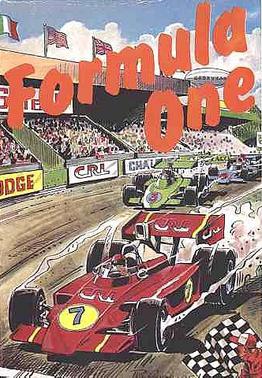
Formula One is a Formula One racing management video game published in 1985 by CRL Group PLC. It was developed by G.B. Munday and B.P. Wheelhouse for the ZX Spectrum, and converted to Amstrad CPC by Richard Taylor.

Monopoly is a 1985 multi-platform video game based on the board game Monopoly, released on the Amiga, Amstrad CPC, BBC Micro, Commodore 64, MS-DOS, MSX, Tatung Einstein, Thomson MO, Thomson TO, and ZX Spectrum. Published by Leisure Genius, this title was one of many inspired by the property.
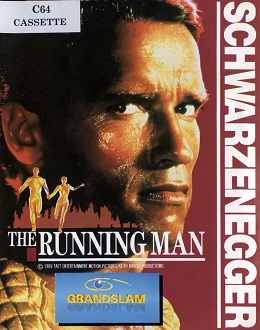
The Running Man is a 1989 beat 'em up video game based on the 1987 film of the same name. It was developed by Emerald Software and published by Grandslam Entertainments for Amiga, Amstrad CPC, Atari ST, Commodore 64, and ZX Spectrum.
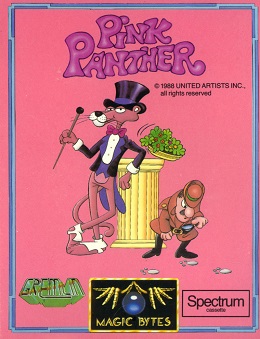
Pink Panther is a 1988 video game based on the character of the same name. It was developed by German company Magic Bytes and published by Gremlin Graphics. It was released in Europe for Amiga, Amstrad CPC, Atari ST, Commodore 64, and ZX Spectrum. Pink Panther was criticized for its control and difficulty, although the Amiga and Atari ST versions received praise for their graphics.
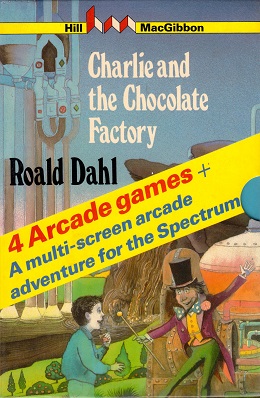
Charlie and the Chocolate Factory is a 1985 video game developed by British studio Soft Option and published by Hill MacGibbon. It was released in the United Kingdom for the ZX Spectrum. It is loosely based on Roald Dahl's 1964 book of the same name, and consumers had the option of buying the game and book as a set.



















